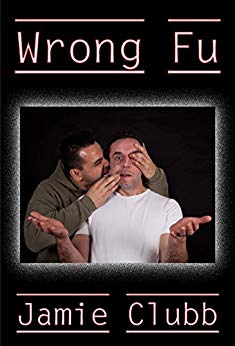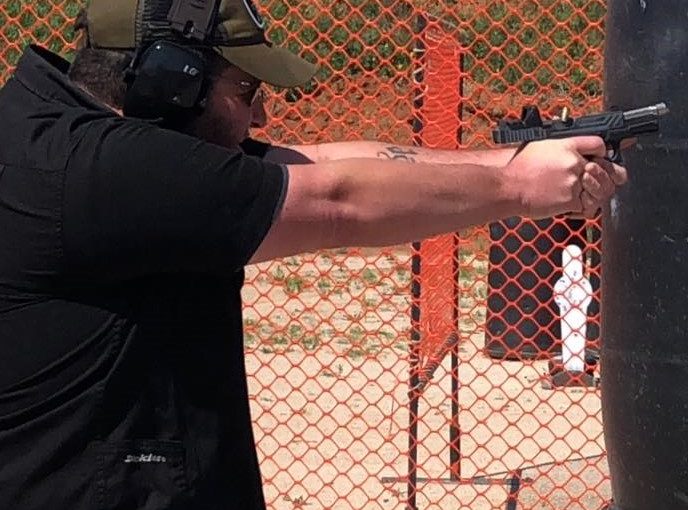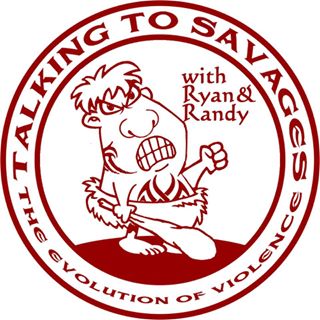Elie – Do you believe self-protection and self-defense are one and the same?
Rory – I try not to get too much into semantics. The words mean whatever you want them to mean.
Elie – What would be a great foundation to self-protection training for a civilian who doesn’t want to train his whole life?
Rory – I’d advise that civilian to quit thinking of them as self-protection skills. You shouldn’t put training time into preventing bad stuff. Training time should go into enriching your life. Developing awareness skills makes life more fun. The fact that you’ll notice odd and dangerous behavior is a side-effect. So I’d have this theoretical civilian get into people watching as a hobby.
It’s simply a better life if you have a fit body. Strength, speed, endurance, coordination— all make life more fun. You don’t have to be perfect, but you can be better. Get out from behind the desk. Move. It’s good for you. And you know what? If that movement involves throwing and punching another human being it’s just as healthy and more fun and might come in handy if a bad guy tries to ruin your life.
Looking at it this way, you can train your whole life and it won’t feel like training.
Elie – What is your methodology for teaching efficient self-defense skills?
Rory – There appear to be two things I do differently, but I’m sure it will spread. The first is principles-based teaching. Almost nothing to memorize. Give the students the physics, tie it into what they already know (if you’ve pushed a car out of the mud you already understand structure) and have them experiment with the principles.
The second is being specific about information transfer.
The way I break it up, there are four ways to get information into students’ heads: Teaching, Training, Operant Conditioning, and Play. Teaching is sharing concepts from the neocortex to the neocortex by juggling symbols. Lecture, writing, diagrams are all teaching. Almost anything you are taught is useless under stress.
Training is anything you do by conscious practice. It is all the drills and rote memory practice. The thousands of reps punching or stepping into a throw or transitioning precisely from a specific armlock to a triangle choke. Training is almost useless in your first few real fights. Your hindbrain simply doesn’t trust it.
Operant Conditioning. There are a bunch of numbers running around: that it takes 300-500 reps to instill a new motor skill, 3000-5000 if you are replacing an old skill. That’s training. How many reps did you need to learn not to touch a hot stove? Once. That’s the difference between conditioning and training. You can’t condition complex responses, but conditioned responses will come out in your first encounter.
Play, in my opinion, is the most important. This is how animals learn. This is how you learned everything you are really good at.
So my specific methodology for most things, is that we have a general game, competitive and with different levels of resistance. The students play the game. Then we break out and work on a skill, like structure. And the students experiment with structure and play one or more games that work with structure in isolation. And then we go back into the general game to integrate the new skills with the old skills. Works for awareness, physical skills and even articulation.
Elie – To what extent can you acclimate yourself to violence during training while never experimenting a real life violence scenario?
Rory – You can’t. Sorry. Anymore than you can acclimatize yourself to cold water by practicing swimming on dry land. No matter how good the simulation gets, it’s not the real thing and the hindbrain knows it.
The three keys, as I see them:
Operant conditioning to get past the sudden attack. A conditioned response will appear without conscious thought and a good response can end the encounter or at least level the playing field before you have time to freeze.
Play. Things you do in play just become the natural way to move. If your play has involved moving bigger people, throwing them downstairs and hitting really hard, when you break the freeze it will be harder to hit softly. However if your play was soft, that will come out, too.
The third is permission. Most people in our society have been systematically told NOT to use force, NOT to act. You will have to fight this conditioning. Let your students know that it’s okay to fight, that they have absolute permission to unleash their natures and adapt and survive.
Elie – What use do you make of scenarios and what is their importance in training?
Rory – In many ways, scenario training is the culmination of all other training exercises. Done properly, the goal is to get as close to real life as possible, without the physical, psychological and legal consequences that can attend a real self-defense incident.
There are a lot of reasons for doing scenario training but for me the most important is to get the student working judgment in tandem with skills.
I feel a need to be cautious here. Scenarios can be intense, and they can be very valuable. But they are dangerous on multiple levels. If your safety protocols aren’t rock solid, they can be physically dangerous— you’ll be using a lot of force in a cluttered, realistic environment and students are always unpredictable. They can be psychologically dangerous— a realistic scenario can always trigger an emotional meltdown. And scenarios can be tactically dangerous— if your scenario designer, facilitator or role players are ignorant or have big egos they can ruin a student’s understanding forever.
If you can’t do scenarios right, and my experience is that only about 20% of the people offering scenarios has any clue about how to run them well or safely— if you can’t run them right it is better for your students not to run them at all.
Elie – What are the aftermath of violence on a psychological level?
Rory – That’s different for everybody and different for different levels of exposure.
Elie – How did you personally cope with the psychological aftermath of violence in your job? Did it have an impact on your personal life?
Rory – Coping mechanisms ranged from having a good network of close friends to sitting in the dark rocking and humming.
Personally, the violence didn’t affect me much. Largely because of the action. Or maybe I don’t process fear normally. The things that stuck with me were never the fear, it was the horror. I found one of my old journals that has a few lines— about a fight in a dorm, lots of blood and three to ‘the hole’ (disciplinary segregation). I have no memory of that. But I remember a baby that was born in booking. The mother arranged to be arrested so she’s have medical care for the birth. She also maxed out on heroin and I can’t remember whether her second drug was meth or crack. But here’s this newborn, addicted to two different drugs. Mom’s an addict and prostitute who only cares about the baby to the extent she can get more benefits from it… the kid’s doomed. Perfect, innocent life. And doomed. That’s the stuff that stayed with me. Suicides. What kind of asshole arranges a suicide so the body will be found by an eleven-year-old? A guy explaining that stabbing a little girl “didn’t count” because he was trying to stab her father and she was “dumb enough” to try to intervene. The dude had no remorse whatsoever, he could see no reason why he should get in trouble for this particular murder.
That’s the stuff that sticks with me. The immediate violence I could do something about.
Rocking in the dark and humming has its place, but probably the most important thing was always having friends and never being afraid to talk. Some of my fellow officers had this idea that you can’t share what you see with your loved ones because they can’t handle it. That’s bullshit. Trust me, if you stay silent the shit they imagine will be ten times worse than the reality. And talking lets you stay anchored to the normal world.
Interview with Rory Miller English version reprinted in Conflict Manager and on CRGI with permission of Elie Edme for Corps Global
http://www.corpsglobal.com




